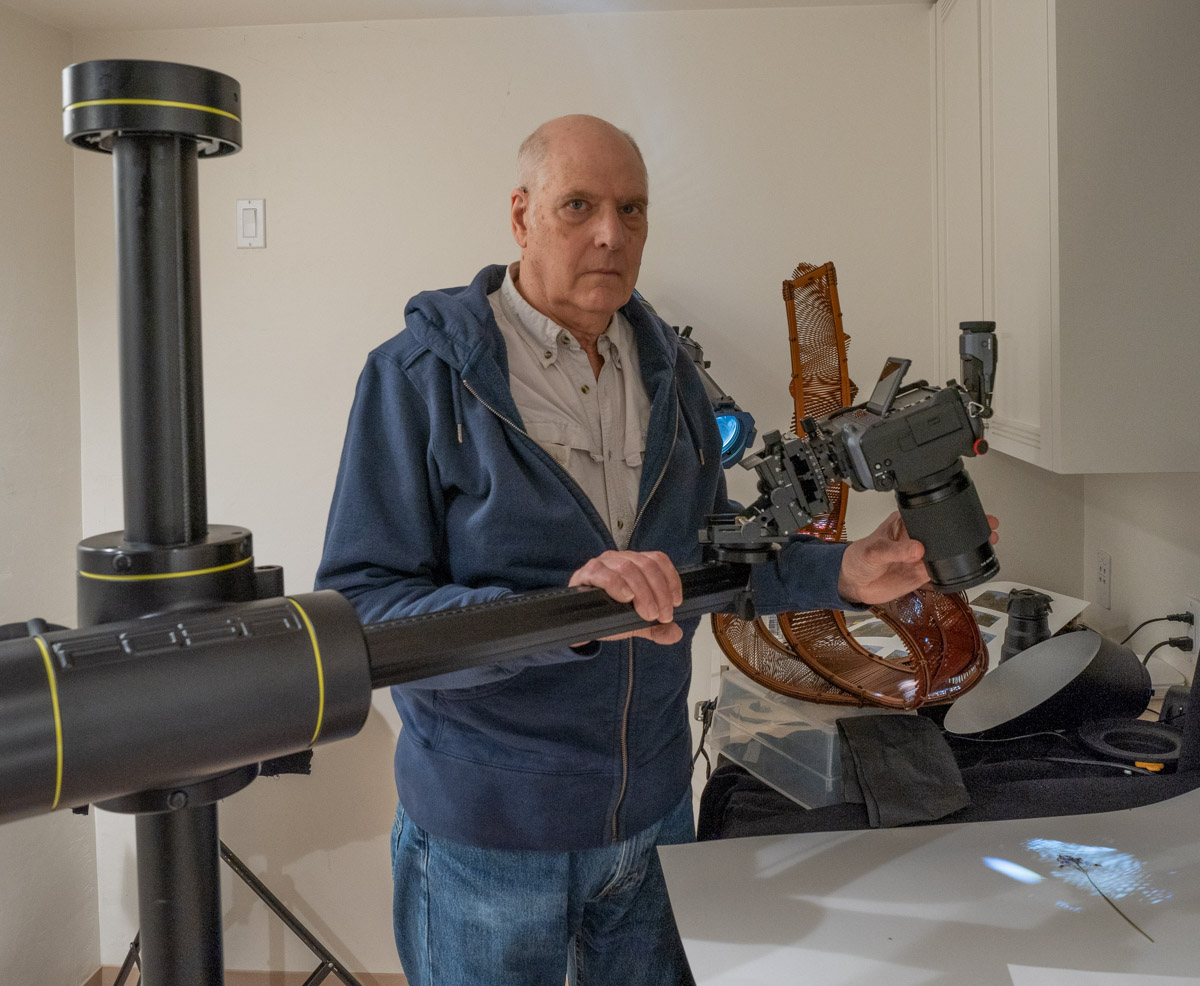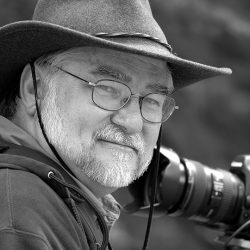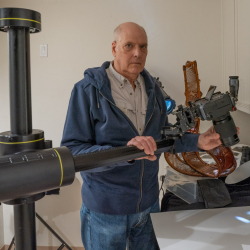Home > Topics > Site and Board Matters > PXL News > What is dynamic range?
What is dynamic range?
Tagged: Dynamic Range Spec
-
AuthorTopic: What is dynamic range? Read 2325 Times
-
PXL Newson: July 31, 2019 at 8:01 pm
I am a bit confused about how camera manufacturers arrive at a spec on Dynamic Range. The new Hasselblad camera specifies a dynamic range of 14 stops and records 16 bits of information. The Sony a7R IV claims a dynamic range of 15 stops, yet still only records 14 bits. The Hasselblad spec seems too conservative, while the Sony spec seems unlikely. Can anyone clarify the difference between dynamic range and bit-depth?
Ron Gentry
Re: What is dynamic range?Reply #1 on: August 1, 2019 at 12:37 pmYou can think of dynamic range as how large the photon bucket is of each photo receptor in the sensor. The more photons that bucket can hold before it “runs over” is a measure of the total light intensity or range from dark to light that it can manage. This is a completely analog concept since the photoreceptor cells in the imager are just linear collectors of photons.
Bit-depth is simply a measure of how granular that photon bucket can be divided (sampled) to deliver a digital representation of the total number of photon variants in that bucket. More bits provides for more subtle change in the value of the light intensity captured in that photonic cell, or bucket. Having more bit depth leads to more precision in making adjustments — in the digital realm — to the image data later.
In television theory, a minimum of 11 bits was postulated in order that full tranmission and reception of tonal gradients could be seen without undue tonal stepping. Twelve bit systems cover this concept nicely and 14 bits covers it by quite a margin. Having 16 bits provides enough precision in granularity such that we have such slight changes in light intensity for each step that, for all practical purpose, it appears fully continuous to the human eye. In actuality, our display technology is more bit depth limited than our cameras. If you see any tonal steps in a 14 bit image, it is likely your display device and not the camera. Most displays today are challenged just to reproduce 10 bits of tonal depth. So, as usual, there are more issues in the output side than in the input side of the image transfer process.
Re: What is dynamic range?Reply #2 on: August 29, 2019 at 2:12 pmI am a bit confused about how camera manufacturers arrive at a spec on Dynamic Range. The new Hasselblad camera specifies a dynamic range of 14 stops and records 16 bits of information. The Sony a7R IV claims a dynamic range of 15 stops, yet still only records 14 bits. The Hasselblad spec seems too conservative, while the Sony spec seems unlikely. Can anyone clarify the difference between dynamic range and bit-depth?
There are several definitions of dynamic range. One of the flavors of Engineering Dynamic Range (EDR) is the easiest to measure. It is defined as full scale divided by the root mean square (rms) value of the read noise, which you can measure by looking at dark-field frames, such as shots of the back of the body cap. Another EDR definition is full scale divided by the signal level where the signal to noise ratio (SNR) equals 1.0. This is more difficult to measure, because you have to find that signal level by experimenting several near-black signal levels.
Another definition, defined and popularized by Bill Claff at his excellent Photons to Photos web site, is Photographic Dynamic Range, which is defined as full scale divided by the signal level that produces an SNR of 16000/ph, where ph is the picture height in pixels. This normalizes in a way that allows fair comparisons of sensors with different resolution, which EDR does not. The PDR for most all cameras will be lower than the EDR, although, when picture heights reach 16000 pixels, PDR will equal the EDR using an SNR of 1.0.
All these dynamic ranges are ratios, which can be converted to stops by taking the base-two logarithm.
I measure the base-ISO EDR (using the RN definition) of the a7RIV at about 13.5 stops:
https://blog.kasson.com/a7riv/sony-a7riv-edr-and-dark-field-spectra/
Jim
Re: What is dynamic range?Reply #3 on: August 29, 2019 at 4:06 pmredacted.
_____
Mike Nelson Pedde
Victoria, BC
https://www.wolfnowl.com/Re: What is dynamic range?Reply #4 on: September 5, 2019 at 7:45 pmWith my Nikon Z7 I see from charts that I get a bit more dynamic range shooting at ISO 64 than ISO 100. However, can this difference really be seen in a print or is it there but not really visible? I guess what I’m getting at is ISO 64 just for marketing. By the way, for landscapes I always shoot at ISO 64 unless it is too windy.
Re: What is dynamic range?Reply #5 on: September 5, 2019 at 11:38 pmWith my Nikon Z7 I see from charts that I get a bit more dynamic range shooting at ISO 64 than ISO 100. However, can this difference really be seen in a print or is it there but not really visible? I guess what I’m getting at is ISO 64 just for marketing. By the way, for landscapes I always shoot at ISO 64 unless it is too windy.
In the deep shadows, you’ll get about a third of a stop more DR. Compare the Z7 at ISO 64 vs the Sony a7RII at ISO 100, then look at the Z7 at ISO 100 against the Sony in these charts:
https://blog.kasson.com/a7riii/sony-a7riii-and-nikon-z7-shadow-noise-numbers/
If you don’t push the heck out of the shadows, the differences will be inconsequential.
Jim
-
This reply was modified 4 years, 10 months ago by
 Jim Kasson. Reason: Remove extra blank lines
Jim Kasson. Reason: Remove extra blank lines
Re: What is dynamic range?Reply #6 on: October 18, 2019 at 7:08 pmHere is a little interesting factoid. When Sony says their cameras have a 15 stop dynamic range, you have to read the fine print! That’s for images that have been resized down to 8 Mpix. Downsizing it like averaging. It reduces noise and hence increases dynamic range. The DR of a Sony A7R III at full 42 Mpix resolution is 13.6 stops (see DP Review), not 15 stops.
That’s “engineering DR” as described in a previous response, which is also an optimistic standard. It is based on a bottom end signal-to-noise ratio (SNR) = 1. Most photographers would agree that SNR = 1 is an unacceptable noise level. At the other extreme, SNR = 10 defines the bottom end of “photographic DR,” however, in some instances we can work with that level of noise. The bottom line is that DR should be taken as a figure-of-merit for comparison of different cameras. There are ambiguities in the precise definitions, so the actual number has to be taken with a grain of salt. The DR of the human eye is only 6.5 stops. The wider DR of our cameras is useful because we can recover information “lost in the shadows” or “lost by underexposure” in post processing.
Except for the very lowest stops of that dynamic range, the noise in images from digital cameras is dominated by photon noise – the granularity of light itself. For 14 bit ADCs, ADC noise and distortion don’t really play a significant role at all. (I personally am not convinced that 16 bits buys anything.). The biggest factor in determining the DR of a camera turns out to be the sensor’s Full Well Capacity (FWC). The photo diodes in the sensor are photon counters, and the FWC is the maximum number of photons they can count before it hitting a ceiling at the top end of DR.
JSS
-
This reply was modified 4 years, 10 months ago by
-
AuthorPosts
- You must be logged in to reply to this topic.





